Имагология советско-американских отношений в период Холодной войны. Рубрика в журнале - Вестник ВолГУ. Серия: История. Регионоведение. Международные отношения
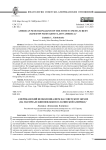
American neocolonialism on the Soviet cinema screen (based on films about Latin America)
Статья научная
Introduction. The scientific relevance of the topic is due to the fact that the concepts of colonialism and neocolonialism are currently becoming part of the official Russian political discourse. The article examines how film representations of the struggle against American neocolonialism in Latin America are used to create the image of the American enemy in the context of the Cold War, which determines the novelty of this work. Methods and materials. The article is based on Soviet features and documentary films about Latin America. Analysis and results. The author comes to the following conclusions: images of neocolonial exploitation of Latin America contributed to the creation of the image of the American enemy, endowing it with such features as immorality, greed, cruelty, and contempt for the population of the Third World. In addition, the images of Latin America and the struggle of its population against neocolonialism were used in the politics of Soviet identity. A demonstration of solidarity with the people of Latin America maintained the image of the USSR as the leader of the liberation struggle against (neo)colonialism. The struggle against pro-American governments in Latin America acquired legitimacy through images of the plight of the countries ruled by powers accomplishing American neocolonialism. Films about the Cuban and Nicaraguan revolutions served to predict victory over neocolonialism in the region in particular and the American enemy in the Cold War in general.
Бесплатно
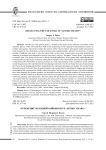
Reflecting the cold war in “Atomic Heart”
Статья научная
Introduction. The present study is devoted to the study of the influence of artifacts of the symbolic politics of the USA and the USSR on the positioning of the respective socio-political systems in modern video games. The article includes the content of the “Atomic Heart” video game studies and analysis from the point of view of the theory of social memory and symbolic politics. Methods and materials. A certain number of methods were used to solve the actual tasks in the article. In particular, case-study methods and elements of structural and comparative analysis were used. Analysis. The game “Atomic Heart” was chosen as a research case. The choice of the case is due to the high popularity of this game both within Russia and internationally, as well as the connection of the plot to the topic of the confrontation between the USSR and the United States after World War II and the presence of a wide representation of the symbolism of this conflict inside the game (up to the reproduction of real campaign materials). On the one hand, the ways of representing the USA in Soviet propaganda and their interpretation by video game developers are studied. On the other hand, the positioning of the Soviet Union by game designers and screenwriters by exploiting the images and stereotypes of perception that were formed in Western culture during the Cold War is examined.
Бесплатно
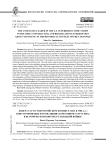
Статья научная
Introduction. There has been a rich tradition of using stereotypes and cliches of Russians in U.S. comic strips since the 1940s. Russian characters represent statehood, cultural dominants, and ethnic stereotypes. They convey the political agenda and civic values and demonstrate reactions to historical cataclysms. The leaders of the USSR represent the state as a political system in comic strips. In the 1980s, the interpretation of the “Russian threat” changed significantly, as did the methods of representing the General Secretary of the Soviet Union. Methods and materials . The article is based on the principles of historicism. The analysis was carried out using a set of methods: descriptive, elements of discourse analysis, and semiotic tools. The work used a range of sources, among which the most important were the issues of graphic comic strips regulating censorship documents and visual representations of Russians. Analysis. The author analyzed the dramaturgy of the 1986-1989 comic strips about the “Russian threat,” in which Mikhail Gorbachev appears. The key motifs that made up the image were identified, an iconological analysis was performed, and the speech characteristics of the protagonists and antagonists of superheroics were analyzed. The dynamics of the image of the leader of the USSR in superhero comic strips were determined by the transition from a caricature image to a Machiavellian ruler of the “Evil Empire,” ready, among other things, to collaborate with the United States.
Бесплатно
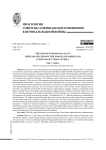
The enemy with human face? Rehumanization of the images of Americans in the Soviet thaw cinema
Статья научная
Introduction. The article focuses on the changes that happened in the portrayal of U.S. characters in Soviet Thaw cinema. The contribution of the article in the field of cultural Cold War is threefold: for the first time, it studies the American characters’ images through the prism of the concept of rehumanization; establishes common and particular traits of deconstruction of the image of the enemy in Soviet and American cinema; and introduces new materials into scientific circulation. The materials consist of the movies on which Soviet cinematography worked in the early 1960s; reviews in film magazines; and archival data of discussions on movies and their scenarios that took place in film studios. Analysis. Specifics of the dehumanization of ‘enemy number one’ in Soviet cinema. The Soviet anti-Americanism was based on the idea of ‘two Americas’: dehumanization has been subjected only to class and politically alien Americans. Deconstructing the image of the enemy in Thaw cinema. Humanizing U.S. characters was achieved with the help of endowing them with kindness, empathy, creativity, emotionality, moral behavior, ability for love, friendship, and comradeship, emphasizing the similarity of the basic values of ‘us’ and ‘them’, and demonstrating the possibility of peaceful coexistence through cases of mutual aid, cooperation, and the occurrence of friendly and romantic relations. The humanness of U.S. characters becomes less dependent on political factors. The cinema expressed the idea that man by nature was good, and this original human goodness was noticeable most of all in children, including American ones. The limits of rehumanization. The conservative part of the Soviet elite accused ‘abstract humanism’ of forgetting the class principle and juxtaposed it to ‘revolutionary humanism’. Criticism of ‘abstract humanism’ in ideology was accompanied by a tightening of demands for representing America that representatives of the Soviet controlling bodies made.
Бесплатно
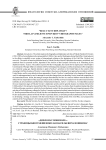
«Дипломат поневоле»: страницы биографии Николая Васильевича Новикова
Статья научная
Введение. В статье анализируется биография и дипломатическая деятельность Николая Васильевича Новикова (1903-1989), советского дипломата, представлявшего СССР в Каире и Вашингтоне в годы Второй мировой войны и принявшего непосредственное участие в установлении новой системы международных отношений и в начале холодной войны. Методы и материалы. Статья основана как на опубликованных текстах самого Н.В. Новикова, дипломатических документах и периодической печати, так и на вводимых авторами в оборот материалах его личного архива, переданного на хранение в Архив Европейского университета в Санкт-Петербурге семьей дипломата. Анализ. Авторы рассматривают биографию Новикова, причины его быстрой карьеры в наркомате иностранных дел, его отношения с руководителями внешней политики, а также обстоятельства его отставки в относительно молодом возрасте. Отдельное внимание уделено деятельности Новикова в США в условиях начинавшейся холодной войны, месту «записки (телеграммы) Новикова» в процессе формирования советских подходов к отношениям с США и его собственному отношению к этим подходам.
Бесплатно
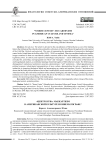
«Центр бури»: маккартизм в американской культуре и кинематографе
Статья научная
Введение. Статья посвящена рассмотрению маккартизма как одного из ведущих факторов, оказавших влияние на культурную политику и политику памяти в США на протяжении всего периода холодной войны. Методы и материалы. Исследуются способы репрезентации атмосферы консервативного идеологического контроля в США в кинопроизведениях 1950-2010-х годов. Фильмы рассматриваются как медиатексты, а содержащиеся в них образы - как символические ресурсы, использующиеся для формирования и трансформации коллективной идентичности, легитимации власти, ее контрольно-репрессивных технологий и практик - социальной мобилизации, политизации повседневности, цензуры, сегрегации на «своих» и «чужих». Анализ. В ходе историко-имагологического анализа производится условная типологизация потенциальных агентов маккартизма, выделяются: институциональные карьеристы-конформисты, администраторы; «мягкие» конформисты - несостоявшиеся оппозиционеры политическому давлению; индоктринированные представители массовой культуры, демонстрирующие активную сопричастность власти в деле наложения идеологических ярлыков, поощрения шпиономании и разоблачений.
Бесплатно
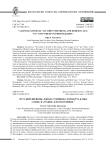
“A Russian journal” by John Steinbeck and Robert Capa: “us” and “them” in photographs
Статья научная
Introduction. The article is devoted to the analysis of the images of “us” and “them” in the photographs of Robert Capa on the pages of “A Russian Journal,” the text of which belongs to John Steinbeck. Containing both explicit and implicit markers of otherness, this text is an early example of nascent Cold War discourse. Methods and materials. Using methods of media and visual studies as well as photograph theory, the author of the article considers “A Russian Journal” as a single media text. Its specificity lies in the interaction of two media within it: visual (photo) and verbal (text). Analysis. The author of the article traces how the meaning of the images arises from their connection with text and how the presence of the images affects the whole narrative of “A Russian Journal.” The photographs here function on two levels. First, they certify the sincerity of the writer, as Capa is represented as an observer, and the very function of the photograph-document is informational. Second, the very presence of a camera is considered a threat and means power. The photographs construct the meaning of reality and implicitly become an instrument to reveal the differences between the two powers, the USSR and the USA.
Бесплатно
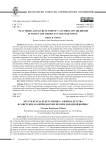
“May there always be sunshine!”: a symbol of childhood in Soviet and American cold war songs
Статья научная
Introduction. The article is the first to study the use of the symbol of childhood by the USSR and the USA songs for the representation of Cold War issues. Methods and materials. Based on the methodology of constructivism, the author analyzes the reasons for the politicization of the image of childhood and the role of popular music as an instrument of symbolic politics. Qualitative content analysis is used to examine more than 400 songs of the USSR and the USA related to Cold War issues; about 70 of them use the symbol of childhood. The symbol of childhood in the Soviet song. A study of USSR songs demonstrates that images of children were an important component of the “cultural Cold War” on the musical front. The symbol of childhood in the American song. U.S. musical pieces contributed significantly to the legitimation of the Cold War and the construction of images of “us” and “them,” including with the help of images of children.
Бесплатно

